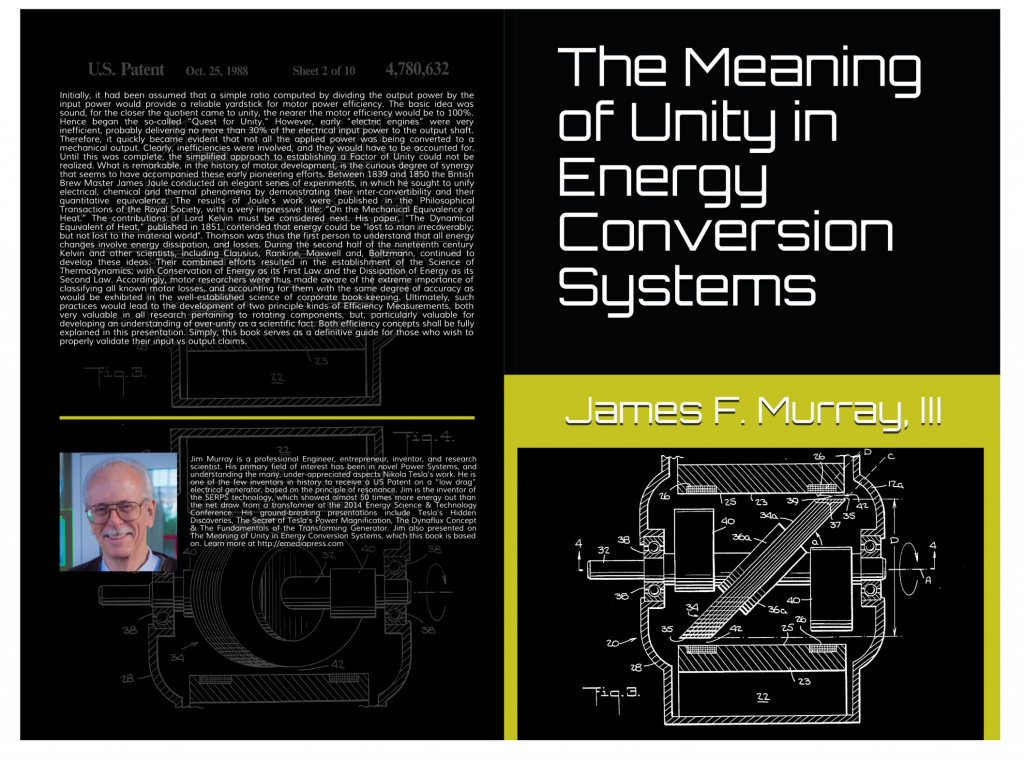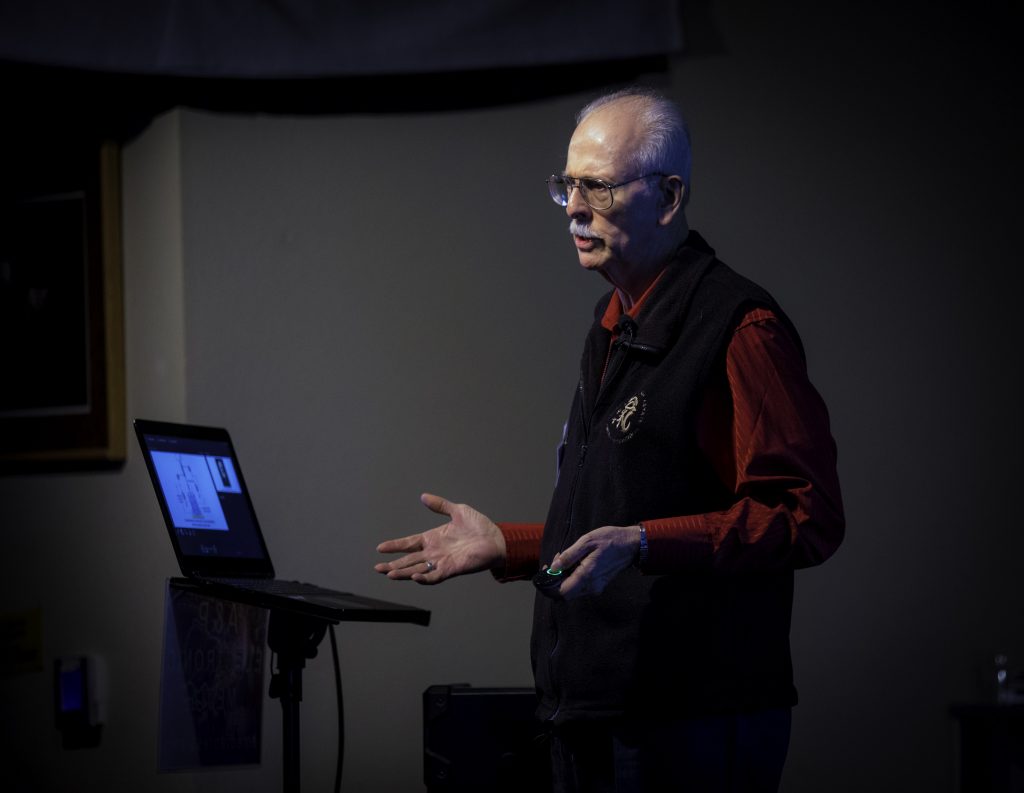
At the 2018 Energy Science & Technology, Jim Murray, a legend in the Tesla Sciences & Free Energy field presented on The Meaning of Unity in Energy Conversion Systems. This is one of the most important presentations given in this field simply for the fact that is explains an accurate accounting method so that the distinctions are made between system efficiency and conversion efficiency. The bottom line is that this shows how to properly compare the input to the output of a system, which is more complex than it initially appears.
Get the paperback here: The Meaning of Unity in Energy Conversion Systems
Initially, it had been assumed that a simple ratio computed by dividing the output power by the input power would provide a reliable yardstick for motor power efficiency. The basic idea was sound, for the closer the quotient came to unity, the nearer the motor efficiency would be to 100%. Hence began the so-called “Quest for Unity.” However, early “electric engines” were very inefficient, probably delivering no more than 30% of the electrical input power to the output shaft.

Therefore, it quickly became evident that not all the applied power was being converted to a mechanical output. Clearly, inefficiencies were involved, and they would have to be accounted for. Until this was complete, the simplified approach to establishing a Factor of Unity could not be realized. What is remarkable, in the history of motor development, is the curious degree of synergy that seems to have accompanied these early pioneering efforts.
Between 1839 and 1850 the British Brew Master James Joule conducted an elegant series of experiments, in which he sought to unify electrical, chemical and thermal phenomena by demonstrating their inter-convertibility and their quantitative equivalence. The results of Joule’s work were published in the Philosophical Transactions of the Royal Society, with a very impressive title: “On the Mechanical Equivalence of Heat.”
Get the paperback here: The Meaning of Unity in Energy Conversion Systems
The contributions of Lord Kelvin must be considered next. His paper, “The Dynamical Equivalent of Heat,” published in 1851, contended that energy could be “lost to man irrecoverably; but not lost to the material world”. Thomson was thus the first person to understand that all energy changes involve energy dissipation, and losses. During the second half of the nineteenth century Kelvin and other scientists, including Clausius, Rankine, Maxwell and, Boltzmann, continued to develop these ideas. Their combined efforts resulted in the establishment of the Science of Thermodynamics; with Conservation of Energy as its First Law and the Dissipation of Energy as its Second Law.
Accordingly, motor researchers were thus made aware of the extreme importance of classifying all known motor losses, and accounting for them with the same degree of accuracy as would be exhibited in the well-established science of corporate book-keeping.
Ultimately, such practices would lead to the development of two principle kinds of Efficiency Measurements, both very valuable in all research pertaining to rotating components, but, particularly valuable for developing an understanding of over-unity as a scientific fact.
Both efficiency concepts shall be fully explained in this book. Simply, this book serves as a definitive guide for those who wish to properly validate their input vs output claims. It also includes copies of one of the most significant and important patents in history in this field, The Dynaflux Alternator, which is Jim’s generator that has a reduced Lenz Law Effect meaning it has less drag than conventional science will admit is possible. There is also another related patent on Jim Murray’s Dynaflux Alternator, which gives a much wider picture. The Dyanflux was used as an example in the book so is not required to understand what it is about, but is valuable to know about.
Get the paperback here: The Meaning of Unity in Energy Conversion Systems
To get a copy of the video presentation from the 2018 ESTC, go here: The Meaning of Unity in Energy Conversion Systems Video Presentation


